Mandy El-Sayegh
In-Session
Zürich
9.6.–30.11.2023
tichyocean presents «In Session» the first solo exhibition in Switzerland by Mandy El-Sayegh. Spanning Tichy Ocean Foundation and Wasserkirche, Zurich, the exhibition features large-scale paintings, sculpture, and multi-media installation, and includes new works made by El-Sayegh responding to the exhibition spaces and to the archive of Miroslav Tichý.
El-Sayegh’s installation in tichyocean reimagines the consulting room of renowned neurologist and founder of psychoanalysis Sigmund Freud. This thematic thread, also hinted at by the exhibition’s title «In Session», connects to the context of the exhibition, which is situated within an active psychology and psychotherapy practice. El-Sayegh incorporates objects such as an antique examination couch, as well as Persian rugs and a shelf displaying antiquities, mirroring the ‘Oriental’ objects which fascinated Freud.
El-Sayegh assembles these objects, each of which is loaded with its own histories and embedded power-relations: be it in the consumption of ‘exotic’ commodities; the position of power taken on by the clinician; or the architecture of authority behind the culturally dominant forms of knowledge which underpin our society. On view in the gallery spaces are new works by El-Sayegh, all of which are informed by her own interest in psychoanalysis, which forms a key part of her artistic research. One element which constantly recurs in El-Sayegh’s work, across its many media, is the idea of symbolically attempting to re-incorporate disparate fragments into a coherent whole. This can be seen in her densely layered paintings, and the works which spread across the walls and floor of the gallery.
In a small gallery at the back of the space, a new sound work, created by El-Sayegh in collaboration with composer Lily Oakes, incorporates a collage of sources, including a recording of a psychoanalysis session the artist under- took during her research for the project with Dr Daniel Strassberg, a psychiatrist and psychoanalyst practicing in the building. Presented alongside this sound piece is a vitrine table sculpture by El-Sayegh – a composition of objects laid out in a metal and glass structure which recalls an archival display case or perhaps an autopsy table. This work forms part of a series El-Sayegh has executed over the past decade, which operates through a process of collection and assemblage, tying the works to other series, such as her paintings, which use the same logic of composition. Sculptural components made by the artist and found objects, often everyday items, each with their own symbolism, are arranged within the tables, drawing together disparate ‘organs’ into a makeshift ‘body’. Objects are assembled in vitrines using an instinctive process of free association, which the artist likens to a session of psychoanalysis, with one table representing one ‘session’. The vitrines, like all of El-Sayegh’s works, draw on her personal archive of objects and ephemera collected over time.
This collecting impulse forms a connection with the archive of the Miroslav Tichý (1926-2011), which is housed at the Foundation. Initially trained at the Academy of Fine Arts in Prague, Tichý later acquired an ‘outsider’ status, living on the margins of Czech society and developing a singular art practice, surreptitiously photographing his subjects, almost exclusively women, using home-made cameras. El-Sayegh explored the Tichý archive in the creation of the exhibition, and incorporates images taken from his photography into her installation, for example the screen-printed reproductions of women’s torsos which appear in the latex and newspaper installation which covers the gallery floor, and in the layered, unstretched paintings-in-progress which unfurl across the walls. El-Sayegh’s attention was caught by the poeticism of Tichý’s images, and by their connection to the notion of the body-in-pieces, which is a frequent motif in her own work. Captured on film, Tichý’s subjects appear fragmented – objects of veneration which lose their agency, their wholeness, under gaze of Tichý’s lens.
The psychic economy within which the images operate, for El-Sayegh, connects the work back to psychoanalysis, as does Tichý’s position as an outsider, which suggested another connection to Freud who, as a Jewish man, was also marginalised by the dominant systems of his day. El-Sayegh makes reference to the history of Jewish persecution with the painting Lager (2023), a title chosen on her discovering that the German word for concentration camps is the same as is used for warehouses, such as those used to store artworks.
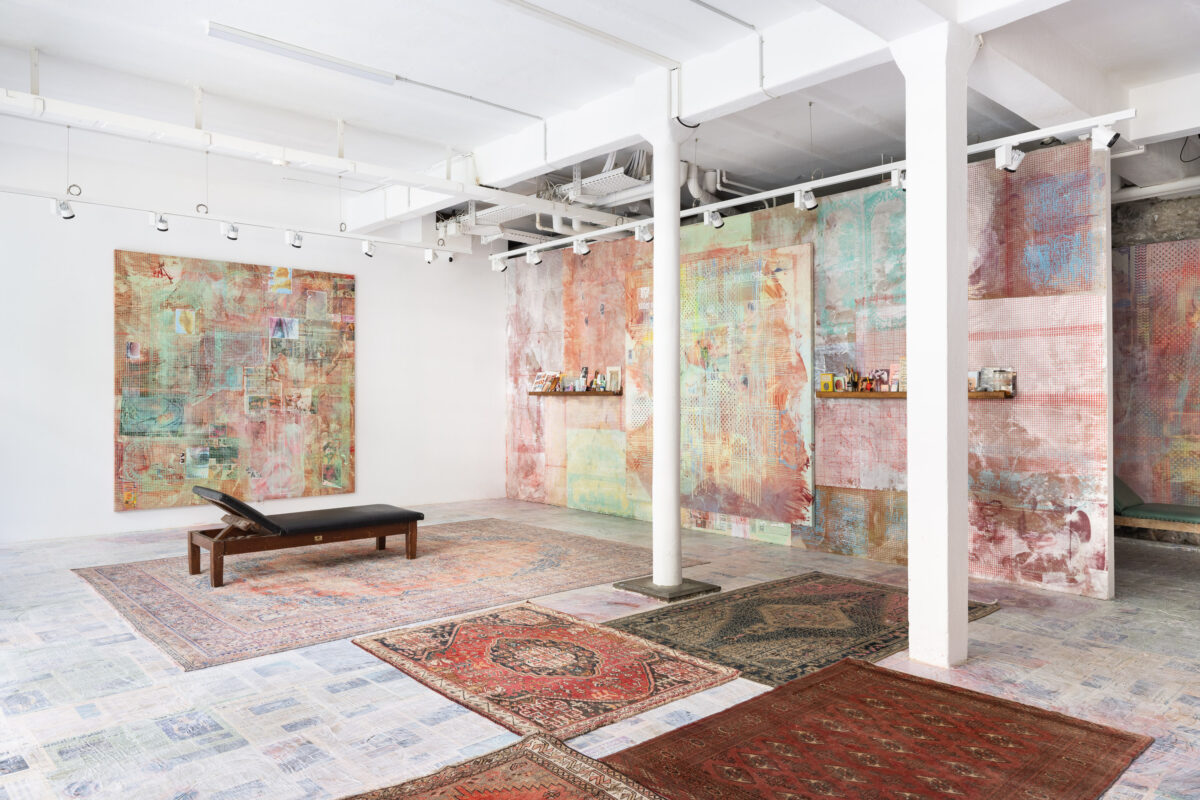
[1/8]
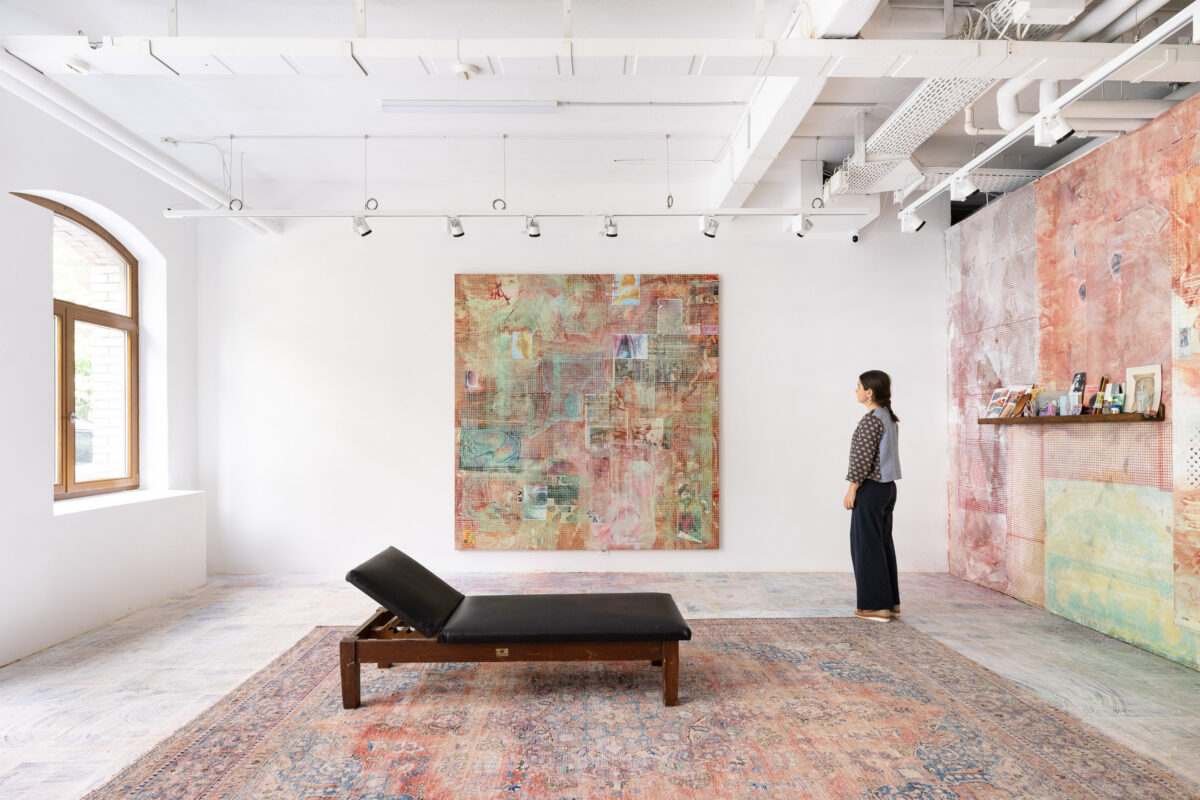
[2/8]

[3/8]
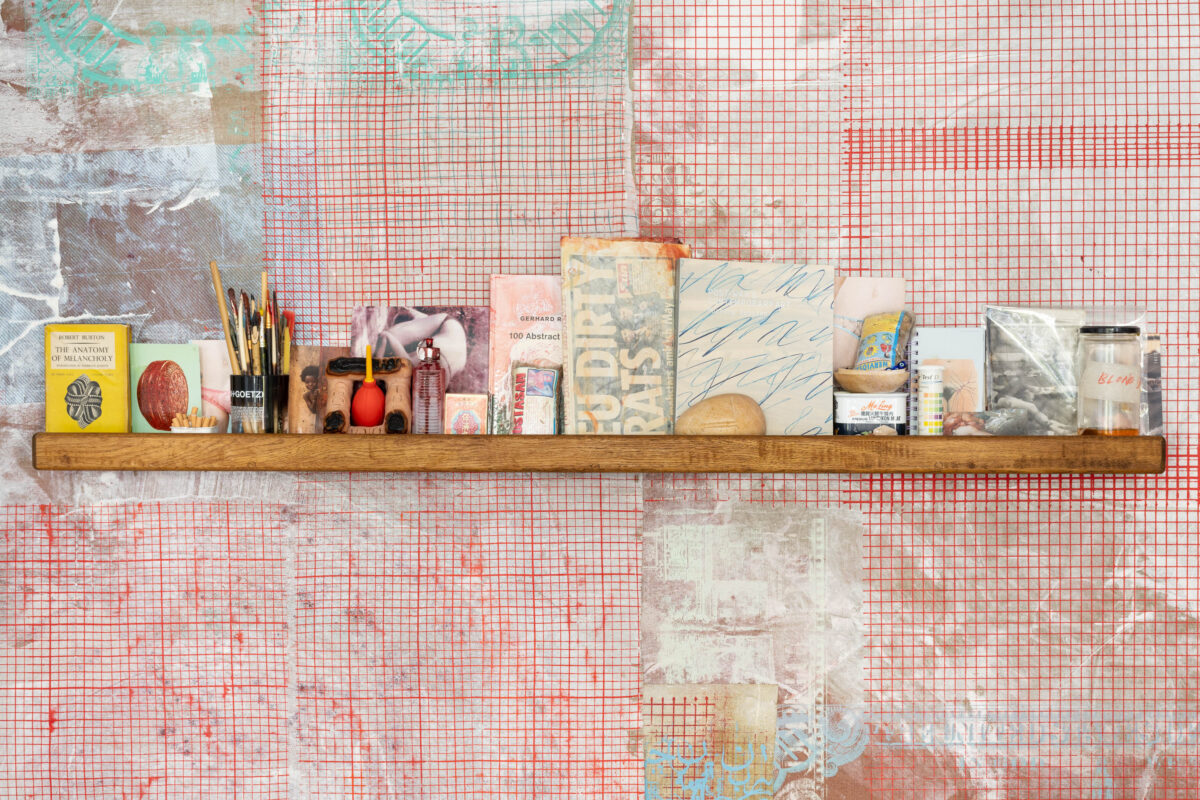
[4/8]
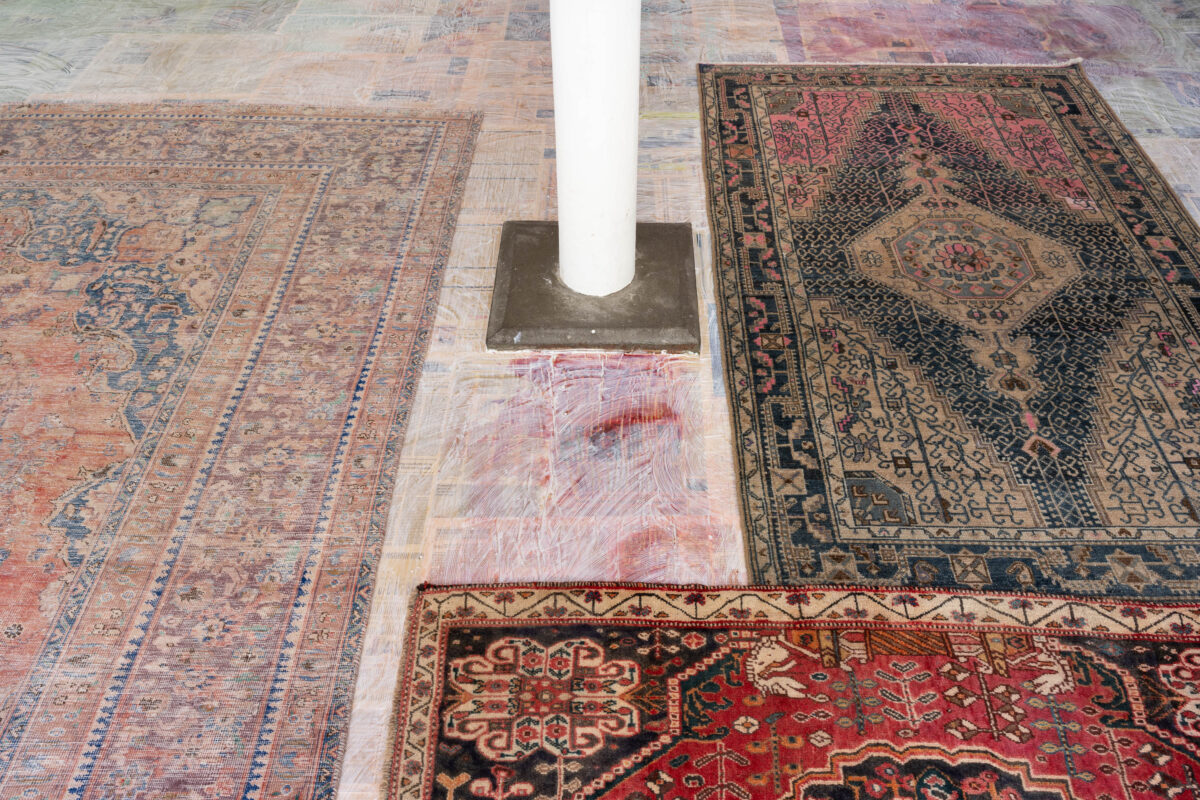
[5/8]
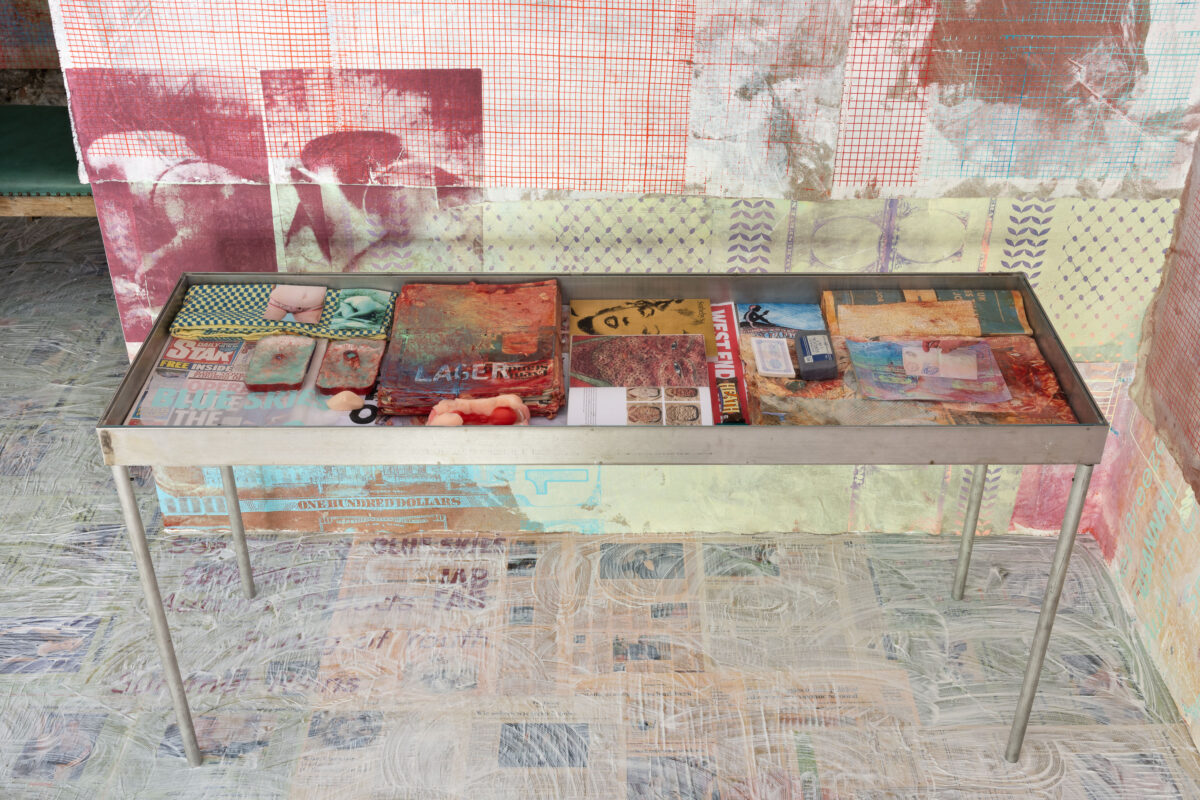
[6/8]
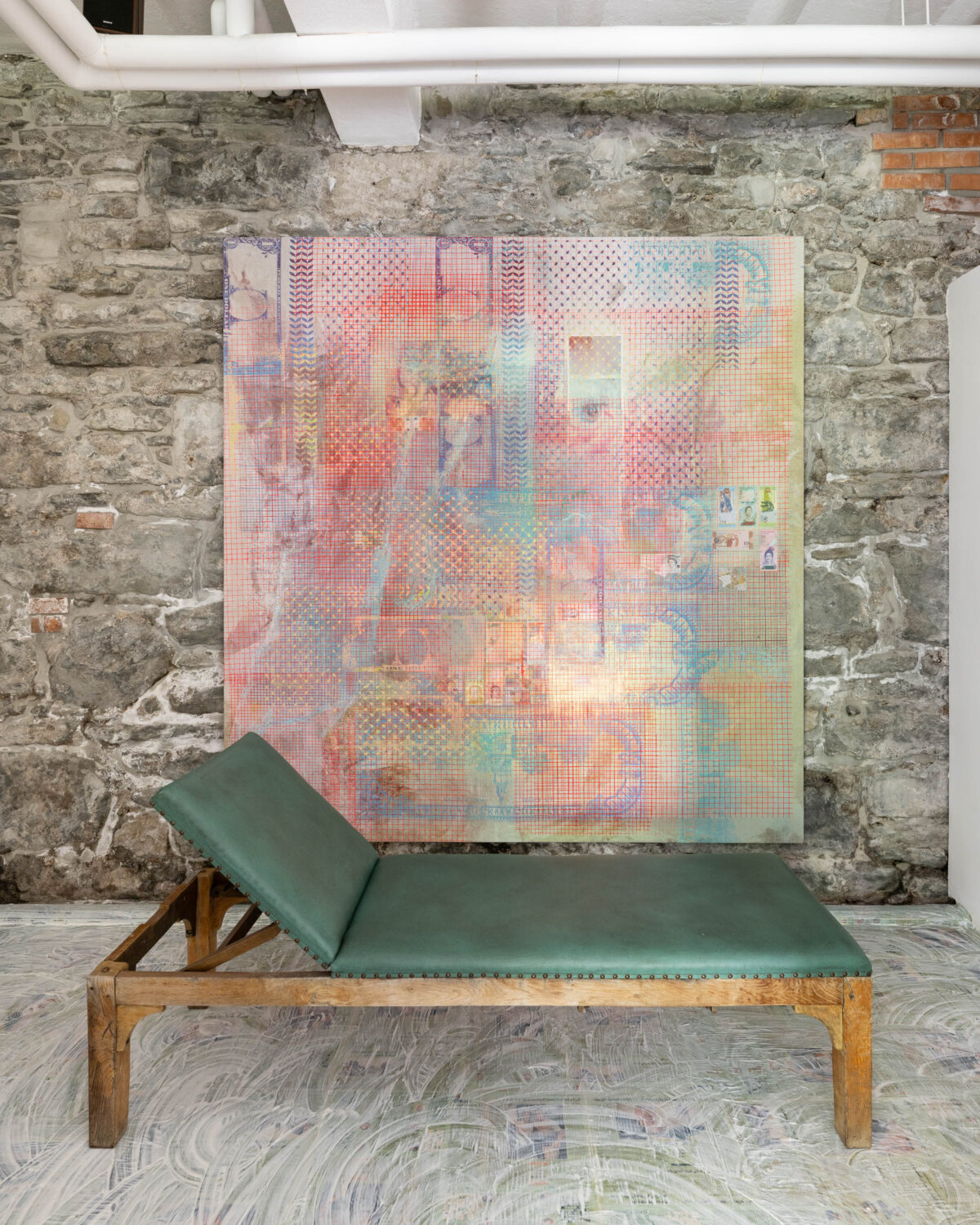
[7/8]
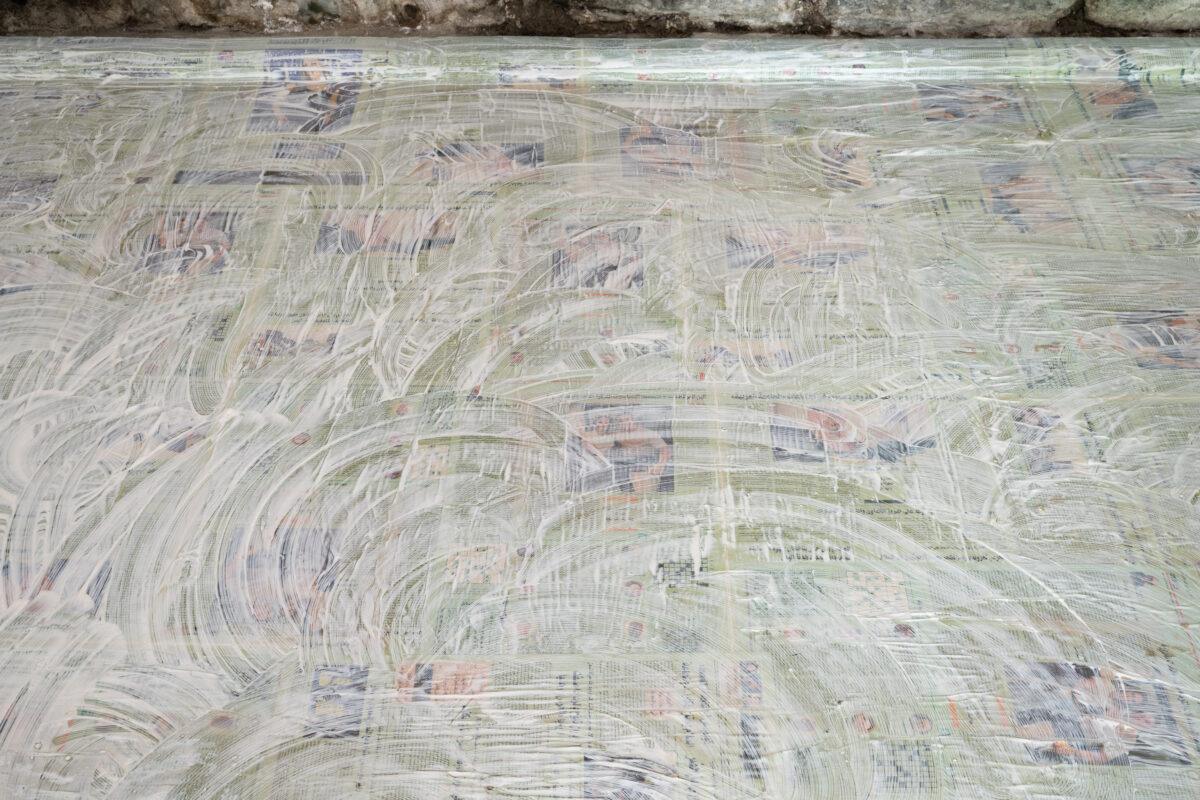
[8/8]